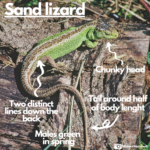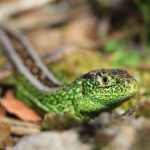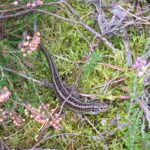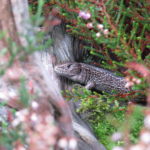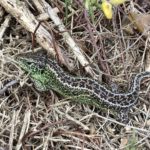Sand Lizard

Back Adder Grass Snake Smooth Snake Common Lizard Sand Lizard Slow Worm
SAND LIZARD
Lacerta agilis
The rarest native lizard in the UK, and a specialist of heathland and sand dunes. In the breeding season (spring) males are characterised by their striking bright green colouration. Both males and females are much stockier than the Common Lizard, with chunkier heads, and two unbroken clear stripes running down the top of the body. They are one of two reptiles that lays true eggs (the other being Grass Snakes), laying them underground in sandy burrows. Sand Lizards can live up to 20 years in the wild if conditions are right.
- Our elusive quarry, the sand lizard! © Rob Solomon
- Female sand lizard © Jamie Neaves
- Sand lizard © Michael Jones
- Male sand lizard in the breeding season © Ben Clifton
[Click on the thumbnails to open]
Where/when to find them
Restricted to lowland heathland and sand dunes, their main colonies are in southern England and north western dune systems. They require sandy environments for breeding, hibernation and for finding their favourite invertebrate prey. These lizards emerge from hibernation around March, and can be found up until early autumn.
Adaptations
Sand Lizards are master diggers, creating burrows that can reach a metre deep. They change the direction of the burrow with sharp corner a few centimetres in from the entrance, usually on an upward slant in a slope, hiding them from view.
Diet
Carnivores. They are mainly insectivores, eating any invertebrate they can get their jaws around. They hunt by detecting motion, and will occasionally accidentally cannibalise their own young.
Rarity
Our rarest lizard, and heavily restricted to certain habitats. These lizards, like Smooth Snakes, are highly protected by law in the UK and require a licence to survey them.
Read more
On our blog: Britain’s green dragon
On our blog: When Countryfile came to visit
#MoreThanJustNightjars

